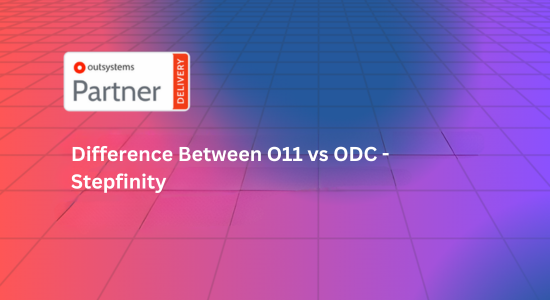In today’s fast-paced digital landscape, businesses are under increasing pressure to innovate rapidly and stay ahead of the competition. Traditional development methods can often be too slow and cumbersome, causing delays in deploying new applications and features. This is where OutSystems comes into play. As a leading low-code platform, OutSystems offers a powerful solution for accelerating digital transformation. In this blog, we’ll explore how OutSystems can help your organization enhance efficiency, speed up development processes, and drive innovation.
What is OutSystems?
OutSystems is a low-code application development platform designed to simplify and expedite the creation of applications. With its user-friendly interface and extensive set of tools, OutSystems enables developers to build, deploy, and manage applications with minimal hand-coding. This approach not only reduces development time but also enhances flexibility and scalability.
Key Features of OutSystems
1. Low-Code Development
OutSystems stands out with its low-code approach, allowing developers to create applications using visual development tools rather than writing extensive code. This method accelerates the development process by:
- Visual Development: Utilize drag-and-drop interfaces to design user interfaces and workflows, speeding up the development process.
- Reusable Components: Access a library of pre-built components that can be easily integrated into applications, further reducing development time.
- Reduced Coding Requirements: Lower the need for manual coding, which minimizes errors and streamlines maintenance.
2. Rapid Deployment
Speed is crucial in the digital age, and OutSystems is designed to meet this demand with:
- One-Click Deployment: Simplify the deployment process with automated, one-click deployment options, reducing the time required to launch new applications.
- Real-Time Updates: Make updates and changes to applications in real-time without disrupting the user experience.
- Built-In Testing: Conduct testing within the platform to identify and address issues before deployment, ensuring smoother launches.
3. Seamless Integration
Digital transformation often involves integrating new applications with existing systems. OutSystems facilitates this with:
- API Integration: Easily connect with third-party services and existing systems through built-in APIs.
- Pre-Built Connectors: Access a range of pre-built connectors for popular enterprise systems, simplifying integration processes.
- Customizable Integrations: Develop custom integrations tailored to specific business needs, enhancing overall system functionality.
4. Scalability and Flexibility
OutSystems supports businesses of all sizes with its scalable and flexible architecture:
- Scalable Architecture: Handle increasing workloads and user demands with scalable infrastructure that grows with your business.
- Flexible Deployment Options: Deploy applications on-premises, in the cloud, or in hybrid environments to meet varying business requirements.
- Cross-Platform Compatibility: Develop applications that work seamlessly across different devices and operating systems, ensuring a consistent user experience.
5. Enhanced Collaboration
Effective collaboration is essential for successful digital transformation, and OutSystems promotes this through:
- Unified Development Environment: Facilitate collaboration between developers, business analysts, and other stakeholders within a single platform.
- Real-Time Collaboration Tools: Use built-in communication and project management tools to streamline teamwork and keep projects on track.
- Feedback Integration: Easily incorporate feedback from stakeholders and end-users to refine and improve applications.
Benefits of Using OutSystems for Digital Transformation
1. Accelerated Time-to-Market
By leveraging OutSystems’ low-code development and rapid deployment features, organizations can significantly reduce the time it takes to bring new applications and features to market. This agility allows businesses to respond more quickly to market changes and customer needs.
2. Cost Efficiency
OutSystems can lead to cost savings in several ways:
- Reduced Development Costs: Lower development costs due to decreased coding requirements and faster development cycles.
- Minimized Maintenance Expenses: Easier maintenance and updates reduce the long-term costs associated with application management.
- Efficient Resource Utilization: Optimize resource allocation by enabling teams to focus on strategic initiatives rather than routine coding tasks.
3. Improved Business Agility
The ability to quickly develop and deploy applications allows businesses to adapt to changing market conditions and customer demands with greater agility. OutSystems helps organizations stay competitive by:
- Enabling Rapid Prototyping: Quickly create prototypes to test ideas and gather feedback, accelerating the innovation process.
- Facilitating Continuous Improvement: Implement iterative changes and enhancements based on user feedback and performance data.
4. Enhanced Customer Experience
OutSystems helps improve the customer experience by:
- Delivering High-Quality Applications: Develop robust, high-performance applications that meet user expectations and provide a seamless experience.
- Ensuring Cross-Platform Compatibility: Reach a wider audience by delivering applications that work on various devices and platforms.
5. Streamlined Operations
The platform’s integration capabilities and unified development environment contribute to streamlined operations by:
- Connecting Disparate Systems: Integrate with existing systems and data sources to create a cohesive IT ecosystem.
- Optimizing Workflow Efficiency: Automate processes and workflows to enhance operational efficiency and reduce manual intervention.
Getting Started with OutSystems
If you’re considering OutSystems for your digital transformation journey, here’s how to get started:
1. Assess Your Needs
Evaluate your organization’s specific needs and goals for digital transformation. Identify key areas where OutSystems can add value, such as application development speed, integration requirements, or cost savings.
2. Explore the Platform
Take advantage of OutSystems’ free trial or demo options to explore the platform’s features and capabilities. Engage with OutSystems representatives or partners to gain insights into how the platform can address your specific challenges.
3. Plan Your Implementation
Develop a comprehensive implementation plan that outlines your objectives, timelines, and resources. Work with OutSystems consultants or partners to ensure a smooth and successful deployment.
4. Train Your Team
Invest in training for your development team and other stakeholders to maximize the benefits of OutSystems. Ensure that your team is well-versed in the platform’s features and best practices.
5. Monitor and Optimize
After deployment, continuously monitor application performance and user feedback. Use this information to make iterative improvements and ensure that your digital transformation efforts align with your business objectives.
Conclusion
OutSystems is a powerful tool for accelerating digital transformation, offering a range of features that streamline application development, deployment, and integration. By leveraging its low-code platform, organizations can achieve faster time-to-market, cost efficiency, and improved business agility. With real-world success stories and a proven track record, OutSystems stands out as a game-changer for businesses seeking to enhance their digital capabilities and stay ahead in the competitive landscape. Embrace OutSystems to drive your digital transformation and unlock new opportunities for growth and innovation.








